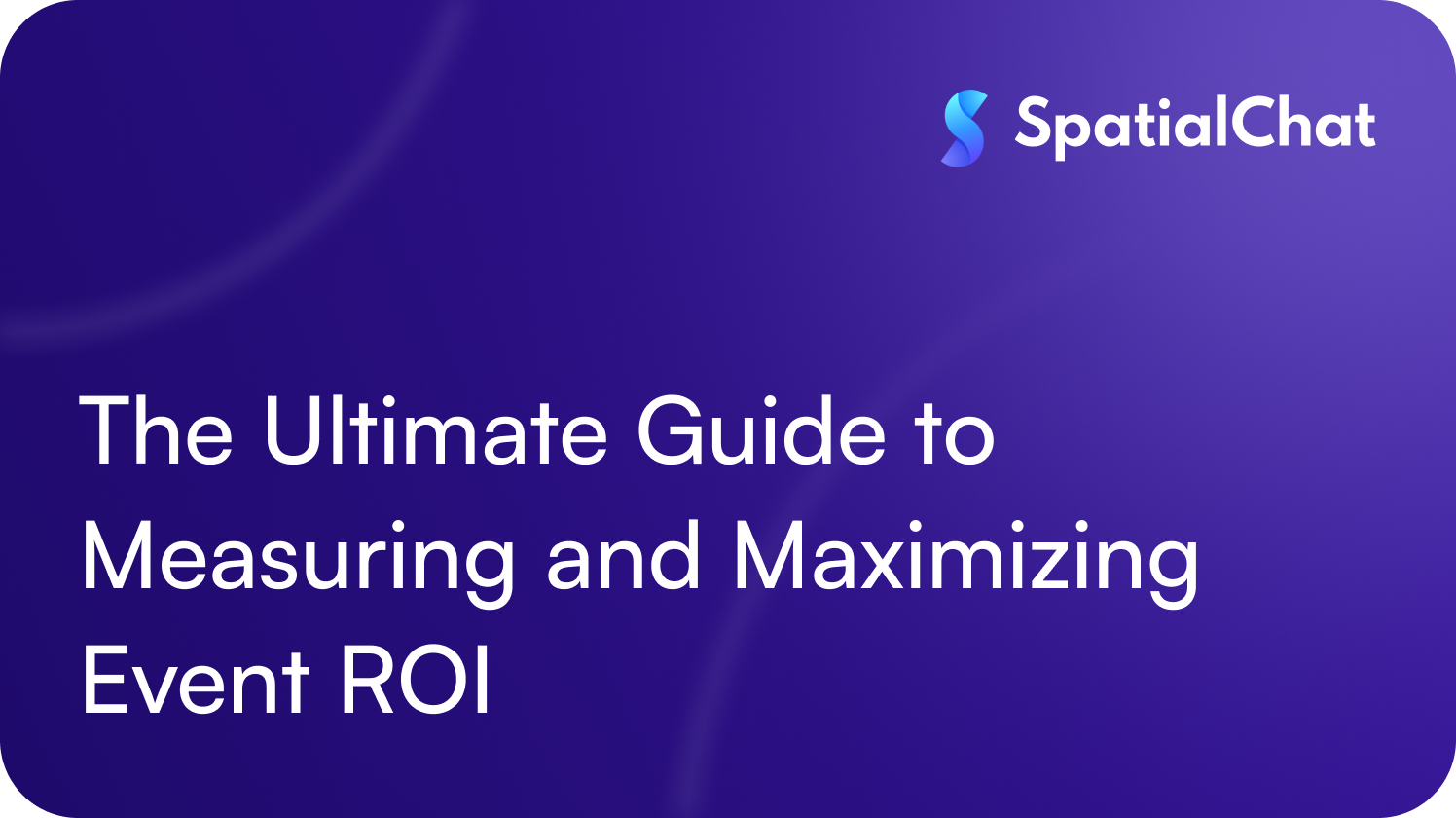For senior event leaders, proving the return on investment (ROI) of events isn’t optional—it’s crucial. Still, studies show that 70% of organizers find it difficult to effectively measure and showcase ROI. If you’re nodding in agreement, you’re in good company.
The challenge goes deeper than justifying spend—it’s about securing future funding, refining event strategies, and aligning your efforts with broader business goals. The silver lining? With the right tools and approach, measuring and improving event ROI is absolutely achievable.
Breaking Down Event ROI: Financial and Nonfinancial Metrics
Event ROI goes beyond just the numbers. While financial returns are essential, the nonfinancial outcomes often hold just as much weight when it comes to measuring the full impact of your events.
Financial ROI: This is the traditional measure—how much revenue your event generates compared to what you spent. For instance, if you invest $50,000 in an event and it drives $200,000 in pipeline, your ROI is 4:1. Tracking this metric helps you quantify the direct financial value of your efforts.
Nonfinancial ROI: Some of the most powerful outcomes can’t be tied directly to revenue—at least not right away. Think brand visibility, social media buzz, press coverage, customer engagement, and relationship-building. These intangible gains may take longer to show results, but they’re key drivers of long-term business growth.
Why Measuring Event ROI Is Challenging
Unlike digital marketing, where results are often immediate and measurable, the impact of an event takes time to unfold. Deals sparked at an event might not close for months, and it’s tough to pinpoint what exactly made the difference—was it the keynote session or a casual chat during the networking hour?
Another key obstacle is disconnected technology. Many event teams rely on multiple platforms—CRMs, event management tools, marketing automation systems—that don’t integrate seamlessly. This leads to scattered data and a fragmented view of performance.
Without a unified tech stack, teams often face:
- Fragmented data: Metrics like attendance, engagement, and revenue impact live in different systems, making analysis difficult.
- Inefficient reporting: Manual processes and disconnected spreadsheets increase the risk of errors and inconsistencies.
- Attribution challenges: It’s hard to know whether an event truly influenced a deal or was just one of many touchpoints.
A Smarter Approach to Measuring and Improving Event ROI
Effectively demonstrating event success starts with a strategic approach to measurement—before, during, and after the event. This process begins with three essential steps:
1. Set Clear Objectives and Metrics
Before you can measure ROI, you need to define what success looks like for your event. Common objectives include:
- Driving revenue impact – such as pipeline influenced or closed-won deals
- Maximizing event profitability – including ticket sales or sponsorship revenue
- Boosting brand visibility and engagement – like attendee satisfaction scores or media coverage
By identifying the right metrics upfront, you can focus on outcomes that truly matter—rather than getting distracted by surface-level stats.
2. Integrate and Analyze Event Data Effectively
To accurately measure event performance, all your data needs to live in one place. That means integrating your event management platform with your CRM and marketing automation tools to create a unified view.
Key best practices include:
- Automating data flows to minimize manual entry and reduce errors
- Creating real-time dashboards to monitor engagement, revenue, and other key metrics
- Using tracking codes and UTMs to tie marketing campaigns directly to event outcomes
3. Optimize ROI Across the Entire Event Lifecycle
ROI isn't just a post-event metric—it should be considered at every stage of your event. From planning to follow-up, each phase presents an opportunity to drive impact.
- Pre-event: Set clear goals, identify your target audience, and design content that resonates
- During the event: Leverage tools like smart badges or mobile apps to track engagement and deliver personalized experiences
- Post-event: Analyze performance data, follow up with leads, and apply insights to improve future events
The Impact of Event Tech on Measuring ROI
An integrated event tech stack is essential for accurate, real-time measurement. By connecting tools across your event ecosystem—like your CRM, event platform, and marketing automation software—you eliminate data silos and gain a comprehensive view of event performance.
Advanced features such as dashboards and analytics allow you to track attendee engagement, pipeline influence, and revenue impact as they happen. These insights help you understand which sessions, activities, or interactions are driving the most value, so you can optimize both in-the-moment experiences and future strategies.
Maximize Event ROI with SpatialChat
With SpatialChat, you can take event ROI measurement to the next level—no matter the format. The platform offers a dynamic, engaging experience not just for networking, but for every kind of session, from keynote speeches and panel discussions to workshops, trainings, and trade shows. Organizers gain access to robust analytics and real-time engagement insights that help track participation, interactions, and attendee behavior across the entire event. With customizable spaces that adapt to your event flow and audience needs, SpatialChat empowers you to create immersive main-stage moments while proving—and growing—the value of your events.
Ready to see it in action? Connect with us or book a demo to learn how SpatialChat can help you run smarter, more impactful events.
